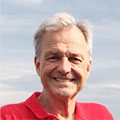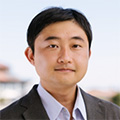宇宙科学談話会
ISAS Space Science Colloquium & Space Science Seminar
FY2025
Low frequency Gravitational Wave Astronomy
 Dr. Karsten Danzmann
Dr. Karsten Danzmann
Max Planck Institute for Gravitational Physics (AEI) Hannover / Leibniz Universität Hannover
For thousands of years, humanity has observed the universe with light. Since the first direct detection of gravitational waves on September 14, 2015, ten years ago, our view of the cosmos has fundamentally changed. Gravitational wave astronomy on Earth has now become routine. The next step is to open the low frequency window with laser interferometers in space. For more than 30 years, we have been developing the LISA mission. In January 2024, LISA was officially adopted by ESA, and we are now in Phase B2. With the selection of the industrial prime, the mission is progressing steadily toward its launch in 2035, bringing us ever closer to listening to the gravitational-wave universe from space.
Conference Hall (2nd floor/ Research and Administration Building A), Via Zoom
Imaging and Design with Differentiable Physics Models
 Dr. Benjamin Pope
Dr. Benjamin Pope
Macquarie University
The technology that underpins machine learning - differentiable programming - is poised to revolutionise astronomy, making it possible for the first time to fit very high dimensional models: hierarchical models describing many objects; the sensitivity of millions of pixels in a detector; models of images or spectra with very many free parameters; or neural networks that represent physics we cannot easily solve in closed form. It also enables fundamental information-theoretic quantities like the Fisher information to be calculated, allowing for determination and optimization of the information content of an experiment. I will discuss how we apply this to the James Webb interferometer experiment, to provide a data-driven self-calibration of the telescope's highest resolution mode and its difficult systematics; to design the Toliman Space Telescope to do high-precision, distortion-tolerant astrometry; and give an overview of related work on interferometry, transits and AGN reverberation mapping in our group.
Conference Hall (2nd floor/ Research and Administration Building A), Via Zoom
Unraveling plasma physics of spacecraft electric propulsion systems
 Dr. Kentaro HARA
Dr. Kentaro HARA
Stanford University, Aeronautics and Astronautics
Spacecraft electric propulsion (EP) systems have become an essential tool for space exploration and utilization. Propulsion devices with high thrust, high specific impulse, high efficiency, and long lifetime help enable current and future space missions. Electrical power, typically collected from solar panels, is used to energize and ionize propellant to generate thrust. Despite the success of EP systems, predictive modeling of ionized gases, i.e., plasmas, remains challenging due to the coupling between collisional-radiative processes, plasma-wall interaction, circuit-plasma coupling, and plasma instabilities and turbulence. In this seminar, I will introduce the state-of-the-art EP technologies and the plasma physics problems associated with EP systems. I will then discuss recent advancements in the physics-based and data-driven models, including fluid moment approaches, particle-in-cell Monte Carlo collision models, and data assimilation using extended and ensemble Kalman filters.
Conference Room A (1257) (2nd floor/ New Building A), Via Zoom
Revealing the Core of the Milky Way through Japanese Infrared Astronomy Projects
Dr. Shogo Nishiyama
Miyagi University of Education
The center of the Milky Way Galaxy is an area of great interest not only in astronomy, but also in the fields of physics and advanced science and technology. It holds clues to the Milky Way's formation and evolution history, and continues to be a site where new stars and star clusters are born. It is not only the stage for the discovery of a supermassive black hole, but also a testing ground for theories of gravity, including general relativity. Such research has been made possible by cutting-edge technologies such as infrared detectors, adaptive optics, and optical-infrared interferometry. In this talk, I will present the current picture of the Galactic center that has emerged from past studies. In addition, extensive observational projects are underway. Among these, the collaboration between JASMINE and Subaru will provide a more detailed and extensive view of the center of Milky Way.
Conference Hall (2nd floor/ Research and Administration Building A), Via Zoom
